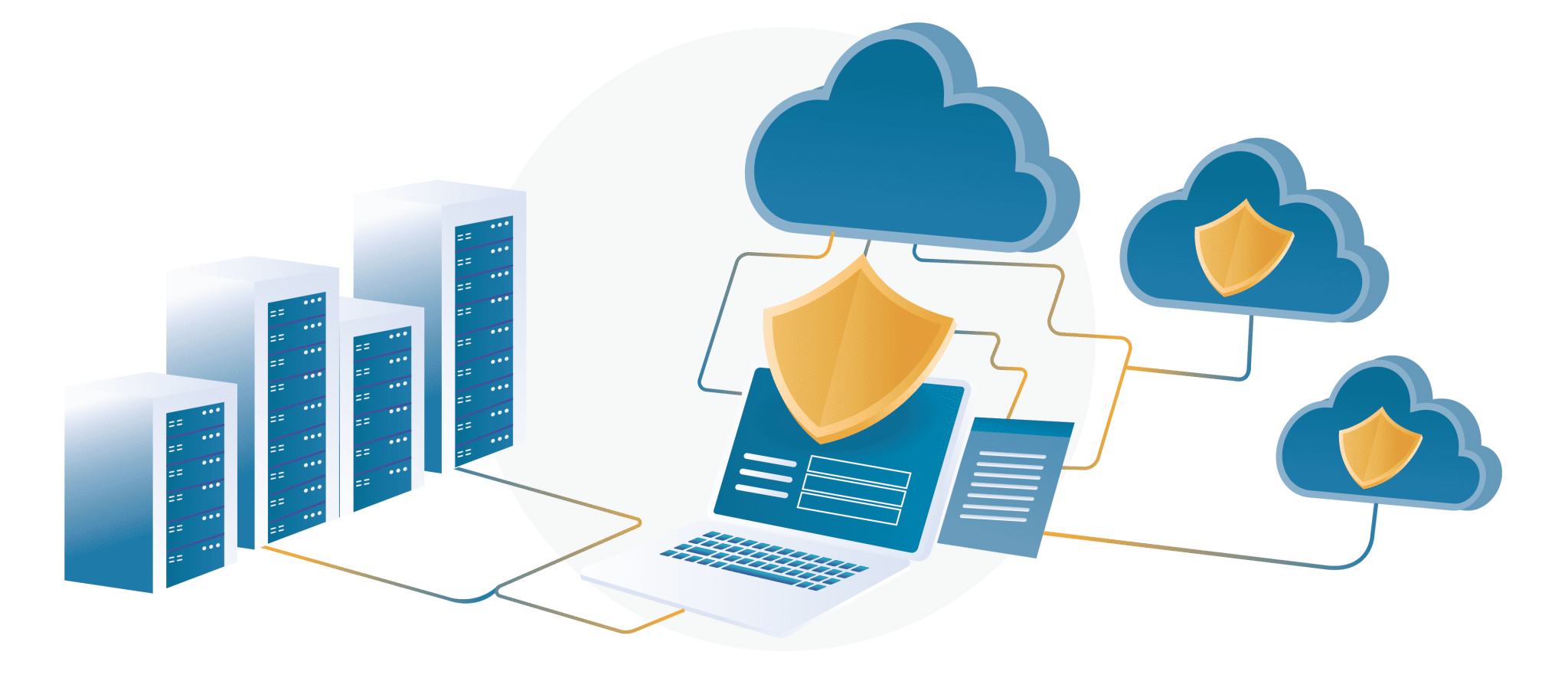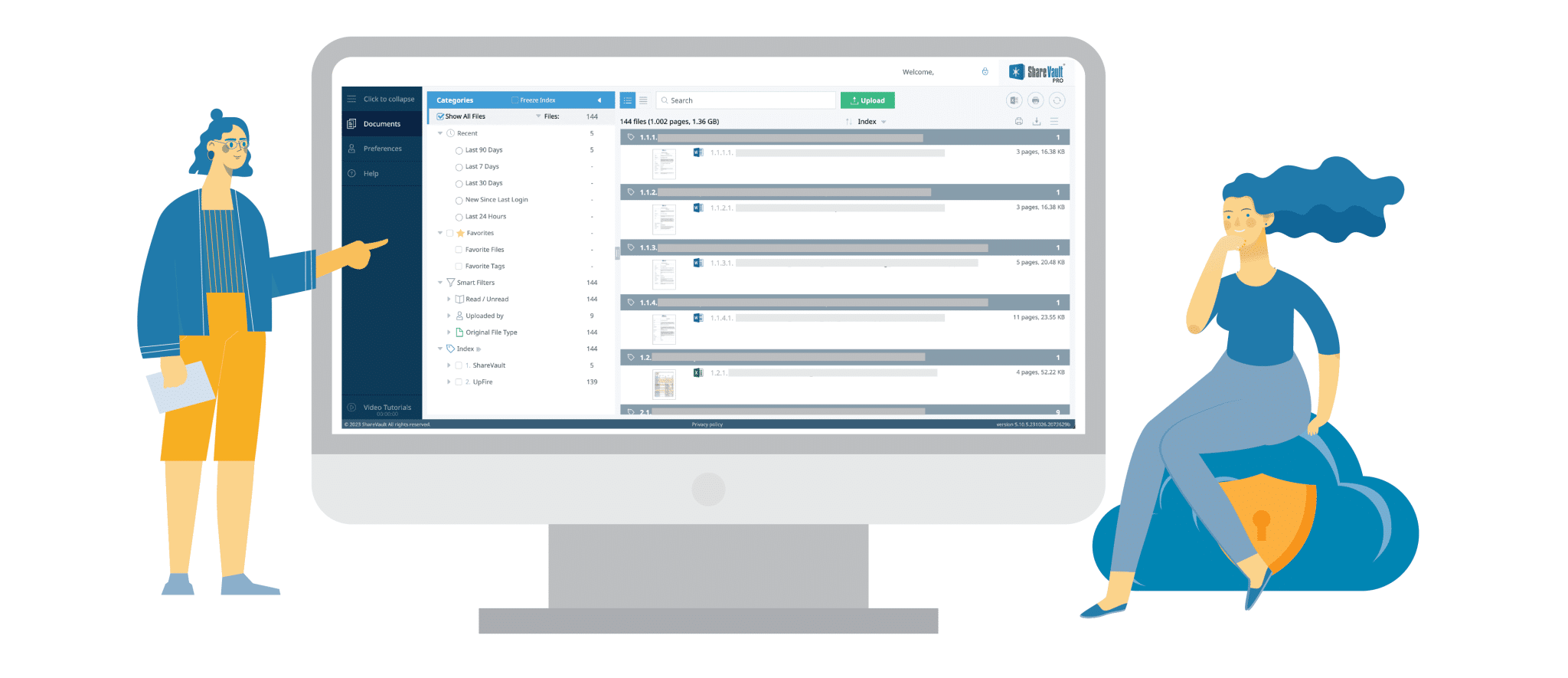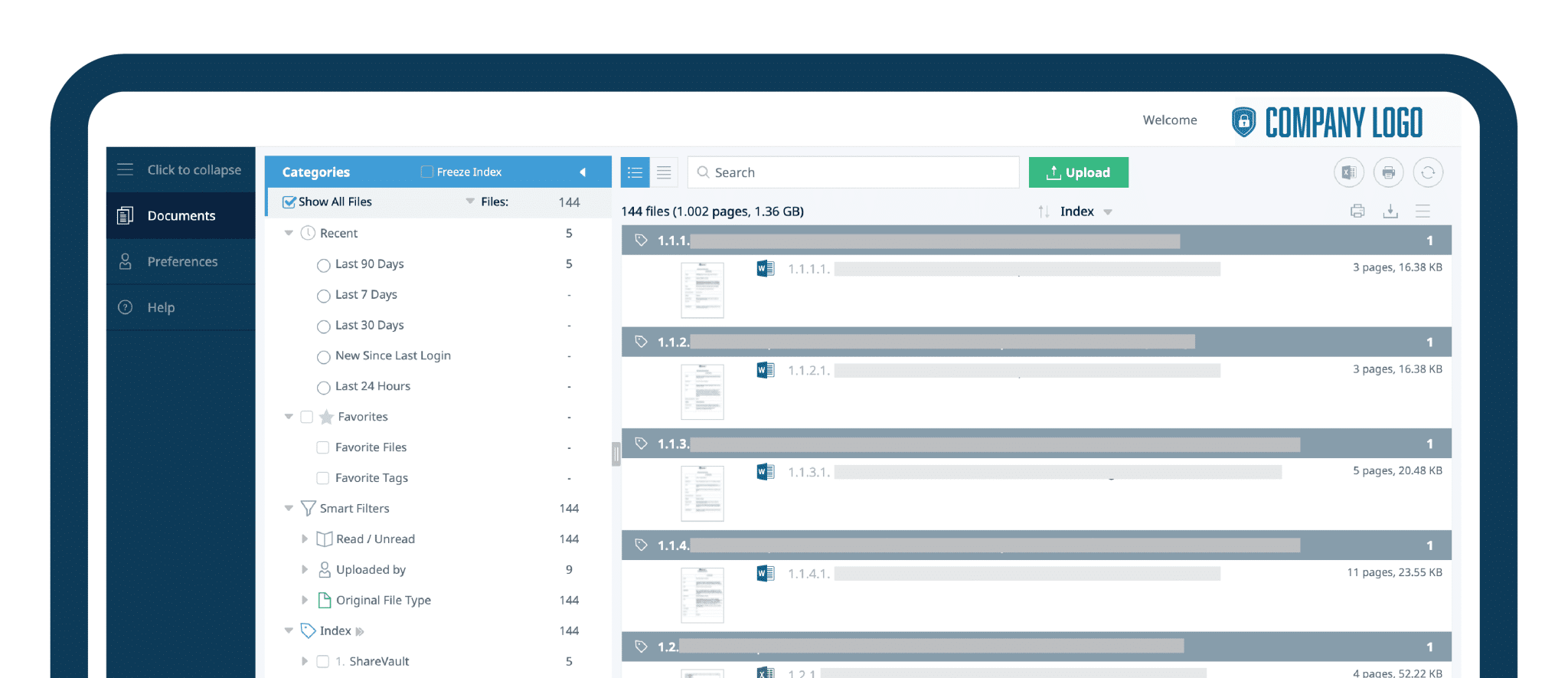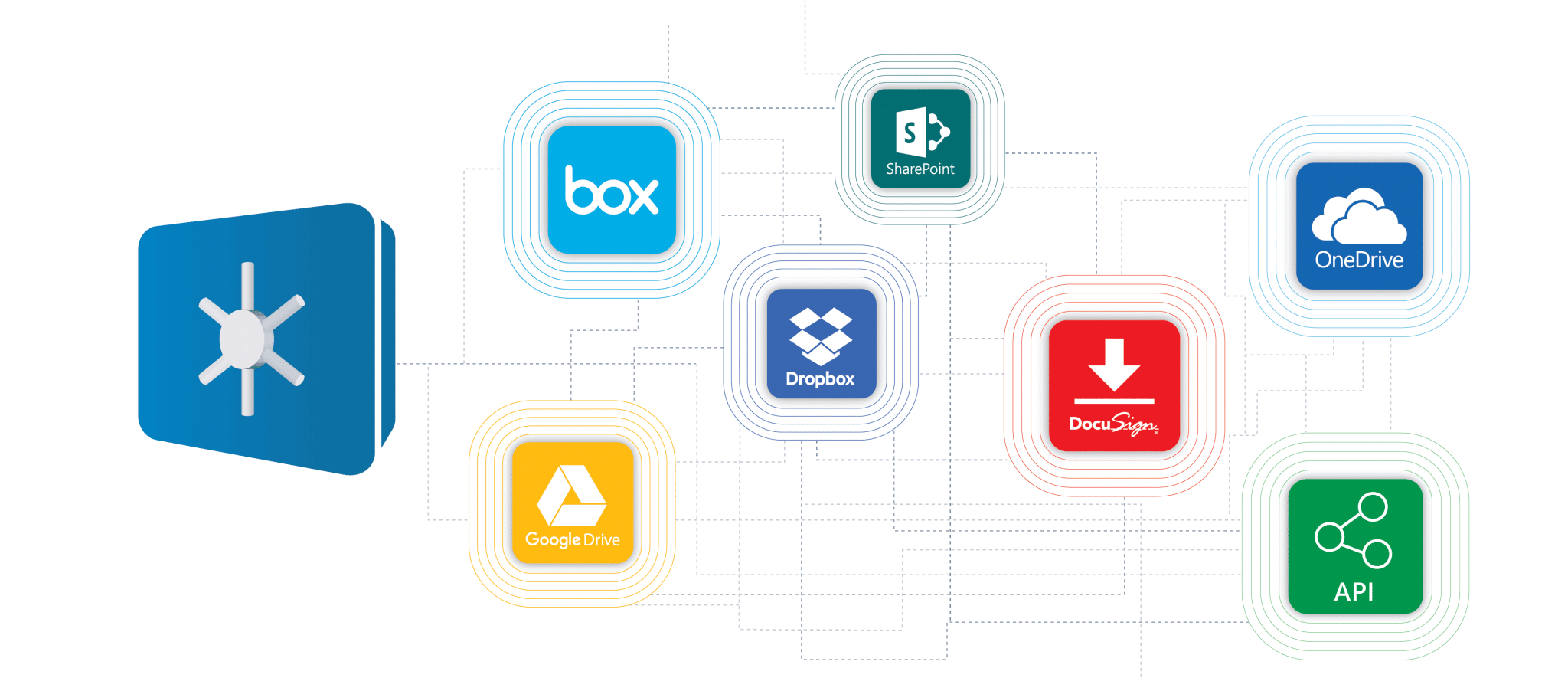In today’s business world where information is largely digital and data breaches proliferate, the need for secure and efficient data sharing has never been greater. This demand has led to the emergence of the latest online virtual data rooms (VDRs) as a revolutionary solution.
Virtual data rooms are secure online repositories used for storing, sharing, and managing sensitive information during various business processes such as mergers and acquisitions, due diligence, fundraising, and legal proceedings. Today’s state-of-the-art virtual data rooms offer cutting-edge features and innovative solutions that serve to address the ever-evolving challenges of secure data sharing while expediting due diligence processes.
Advanced Security Features
Today’s modern VDRs prioritize data security above all else. They employ robust security features to ensure that only authorized users can access sensitive documents. Additionally, VDRs offer features like dynamic watermarks, document expiration, and remote data wiping to further enhance security. These measures provide organizations with peace of mind when sharing confidential information with external parties. These advanced security features not only protect data but also enhance user confidence and streamline operations.
End-to-End Encryption
End-to-end encryption is the cornerstone of data security in virtual data rooms. It ensures that data is encrypted from the moment it is uploaded until the authorized user decrypts and accesses it. Even service providers themselves cannot decipher the information stored within the VDR, providing an additional layer of security. With robust encryption algorithms in place, unauthorized access to sensitive data becomes nearly impossible, making it a vital feature of state-of-the-art VDRs.
Multi-Factor Authentication (MFA)
The latest online virtual data rooms incorporate multi-factor authentication as a standard security feature. MFA requires users to provide two or more forms of identification before being granted access. This typically includes something the user knows (password), something the user has (a mobile device or security token), and something the user is (biometric data like fingerprints or facial recognition). MFA dramatically reduces the risk of unauthorized access, even if a password is compromised.
Watermarking
Full-featured VDRs allow administrators to add dynamic watermarks to documents. Watermarks are clearly visible, applied diagonally across the page or screen, yet do not interfere with the readability of the underlying text. The watermark text is customizable, so administrators can embed the following dynamic information:
- User’s name
- User’s email address
- User’s IP address (only with ShareVault Pro and ShareVault Enterprise)
- Current date
- Current time
Watermarking provides a clear indication to the reader that the content is confidential, and since the user identity can be included in the watermark, it allows for a simple but effective deterrent against distribution of printed documents to unauthorized readers.
User Activity Tracking
A modern virtual data room’s document tracking features enable administrators to monitor who views, prints, downloads, or shares specific documents. These systems meticulously record and log every action taken by users, ensuring a comprehensive audit trail for security and compliance purposes.
This tracking encompasses a wide range of activities, including document access, edits, downloads, and even user-to-user interactions like comments and messaging. Furthermore, VDRs employ authentication measures to verify user identities, guaranteeing that only authorized individuals can access sensitive data. This meticulous tracking and access control not only bolster data security but also provide organizations with valuable insights into how their confidential information is being utilized, fostering transparency and accountability, and often supplying valuable deal intelligence.
Granular Permissions and Access Control
The latest online virtual data rooms offer granular permissions and access control, allowing administrators to define precisely who can access specific documents or folders. These permissions can be adjusted on a per-user, per-group, or per-document basis, ensuring that sensitive information is only accessible to authorized individuals.
Some VDRs employ powerful Information Rights Management (IRM) technology, allowing administrators to retain persistent control over documents shared with third parties. Protected documents are AES-256 bit encrypted and can only be opened by users with current rights, so documents can be remotely “shredded”. In other words, a user’s permission to open a document can be revoked retroactively, even for files already downloaded.
Expiration Date/Time
Many VDRs have policies that can be configured to expire file permissions either on an absolute date or after a relative delay (number of days) from the date / time the files were uploaded. After expiration, the corresponding users will no longer be able to access files to which the policy has been assigned. The optional notification setting, when enabled, sends an email alert to administrators upon expiration.
The expiration feature allows administrators to easily enforce deadlines associated with business processes. Using this feature in combination with Information Rights Management (IRM), means that even documents that have already been downloaded cannot be opened after expiration.
AI and Machine Learning Integration
Many modern VDRs incorporate artificial intelligence (AI) and machine learning (ML) capabilities to revolutionize the way businesses manage and secure their sensitive data. AI plays a pivotal role in automating various aspects of data management within VDRs. For instance, AI algorithms can assist in document classification, automatically tagging and organizing files based on content and context, making data retrieval more efficient.
Moreover, AI-powered analytics within VDRs can provide valuable insights by scanning through vast datasets, detecting patterns, anomalies, and potential risks, thereby enabling better decision-making during due diligence processes. AI also enhances security within VDRs by monitoring user activities, detecting suspicious behavior, and enforcing access controls.
Ultimately, the integration of AI into VDRs not only streamlines data management but also fortifies the protection of sensitive information, making them indispensable tools for modern businesses in an era of data-driven operations.
User-Friendly Interface
User experience is a crucial aspect of any technology, and state-of-the-art VDRs are designed with this in mind. They offer intuitive and user-friendly interfaces that require minimal training for both administrators and users.
Features like drag-and-drop file uploads, customizable dashboards, and real-time notifications make the VDR experience efficient and enjoyable while streamlining the due diligence process.
Q&A Modules
Some VDRs include powerful Q&A modules where end users can ask private questions about the documents they are reviewing. Administrators can create a group of Q&A moderators who will be notified whenever users post questions. A Q&A workflow feature allows moderators to forward questions to appropriate subject matter experts, and then approve or reject the response before replying to the end user.
The default behavior of Q&A is that the questions and corresponding answers are a private conversation between the original question author and the Q&A moderator, but the moderator(s) can decide to share questions and answers with other users as desired. At the end of the project, admins can export a complete record of all questions and answers.
Mobile Accessibility
As remote work becomes increasingly prevalent, VDRs have adapted to offer secure mobile access. Leading VDRs provide mobile apps with security measures like fingerprint recognition or facial recognition to ensure that confidential data remains protected even when accessed from smartphones or tablets. Mobile VDR apps are designed to be as secure and user-friendly as their desktop counterparts.
Customization and Branding
Branding and customization options are essential for organizations looking to maintain a consistent and professional image when sharing documents. State-of-the-art VDRs allow users to customize the platform with their company logo, colors, and branding elements. This not only enhances the user experience but also reinforces the organization’s identity during due diligence processes.
Compliance and Reporting
Virtual data rooms play a crucial role in industries where regulatory compliance is paramount, such as finance and healthcare. State-of-the-art VDRs come equipped with compliance features, including audit trails, detailed reporting, and data room activity monitoring. These capabilities help organizations demonstrate adherence to regulatory requirements during audits and legal proceedings.
Secure Document Storage
VDRs provide a highly secure and controlled environment for storing sensitive documents. Compliance often requires strict data security measures, and VDRs typically employ encryption, access controls, and authentication protocols to ensure data integrity and confidentiality. This helps organizations comply with data security regulations like GDPR, HIPAA, or SOC 2.
Access Control
VDRs allow organizations to control who can access specific documents and what actions they can perform (e.g., view-only, download, edit). This is vital for compliance, as it ensures that only authorized personnel can access sensitive information, reducing the risk of data breaches or unauthorized disclosures.
Audit Trails
VDRs maintain detailed audit logs that track all user activities within the platform. These logs can be used to demonstrate compliance with regulatory requirements that mandate data access and change tracking. They provide a clear record of who accessed what documents and when, which can be crucial for reporting and compliance audits.
Document Versioning
Compliance often involves keeping records of document revisions and ensuring that the latest versions are accessible. VDRs typically offer version control features, allowing organizations to maintain a history of document changes and ensuring that the most up-to-date documents are readily available for reporting purposes.
User Authentication
VDRs implement robust user authentication mechanisms, such as two-factor authentication (2FA) or single sign-on (SSO), to verify the identity of users. This is essential for regulatory compliance, as it helps prevent unauthorized access and ensures that only authorized personnel can access sensitive information.
Data Retention Policies
Many compliance regulations require organizations to retain documents for a specific period. VDRs often offer customizable data retention policies that automate the process of document retention and deletion based on regulatory requirements, reducing the risk of non-compliance.
Reporting Tools
VDRs often include reporting features that allow organizations to generate customized reports on user activity, document access, and other relevant metrics. These reports can be used to demonstrate compliance with various regulations and provide evidence during audits.
Collaboration Features
In some cases, compliance requires collaboration on sensitive documents with external parties, such as auditors or regulators. VDRs facilitate secure collaboration by allowing controlled sharing of documents and real-time collaboration features while maintaining data security.
Secure Communication
VDRs often offer secure communication channels, such as encrypted messaging and notifications, which can be important for discussing compliance-related matters without exposing sensitive information to external risks.
Virtual Data Rooms (VDRs) are powerful tools that help organizations meet compliance and reporting requirements by providing a secure, controlled, and auditable environment for managing sensitive documents and data.
Integration with Third-Party Tools
The latest online virtual data rooms also integrate seamlessly with other business-critical tools such as project management software, CRM systems, and cloud storage platforms. This integration streamlines workflows, allowing users to access all the tools they need in one centralized location.
To further enhance their functionality and streamline processes, VDRs also often integrate with Application Programming Interfaces (APIs) to enable seamless data exchange and automation. Here’s how VDRs integrate with APIs:
API Definition and Access
VDR providers create APIs that define the methods and data structures for interacting with their platform. These APIs are typically RESTful or SOAP-based, and they expose various functionalities of the VDR, such as document upload, access control, user management, and reporting.
Authentication and Authorization
VDR APIs require authentication and authorization to ensure secure access to sensitive data. Users or systems accessing the API need to provide appropriate credentials (e.g., API keys, OAuth tokens) to prove their identity and permissions.
Data Retrieval
VDRs allow authorized users to retrieve documents and metadata stored within the VDR through API calls. Users can request specific documents or lists of documents, search for content, and retrieve associated information.
Document Upload and Management
APIs enable users to upload documents into the VDR programmatically. This is particularly useful for bulk uploads or when integrating with document generation systems. Users can also use the API to manage documents, update metadata, and organize content within the VDR.
User and Access Management
VDR APIs support user management, allowing administrators to add, remove, or modify user accounts and their associated permissions. This feature is critical for controlling who can access and interact with documents stored in the VDR.
Notifications and Alerts
VDRs often provide APIs for notifications and alerts. These APIs can be used to set up custom triggers and notifications based on specific events within the VDR, such as document access, updates, or user activity.
Reporting and Analytics
API integrations can facilitate the extraction of data for reporting and analytics purposes. Users can retrieve information about document access history, user activity, and other relevant metrics to gain insights into the usage and effectiveness of the VDR.
Workflow Automation
VDR APIs can be integrated into workflow automation tools and systems. For example, during an M&A transaction, VDR APIs can be used to trigger automated processes when specific conditions are met, such as sending notifications when a new document is uploaded or automatically populating due diligence reports.
Customization and Branding
Some VDRs offer APIs that allow organizations to customize the VDR interface and branding to match their corporate identity. This level of customization can be achieved by integrating the VDR API with a content management system or a web application.
Security and Compliance
VDR APIs often include security features like encryption and compliance controls to ensure that data remains confidential and meets regulatory requirements. These security measures are maintained even when data is accessed or manipulated via the API.
Overall, VDRs that offer robust API capabilities enable organizations to tailor the VDR experience to their specific needs, streamline workflows, and improve the efficiency of critical business processes while maintaining the highest level of data security and control.
The latest online virtual data rooms have revolutionized the way organizations share and manage sensitive information. With advanced security features, AI integration, user-friendly interfaces, collaboration tools, and mobile accessibility, these VDRs are tailored to meet the demands of today’s dynamic business environment.
Moreover, customization options, compliance features, and third-party integrations make them versatile tools for a wide range of industries. As the need for secure data sharing continues to grow, state-of-the-art virtual data rooms will remain at the forefront of safeguarding confidential information and facilitating seamless collaboration.
ShareVault has been providing organizations of all types and sizes with secure document sharing solutions for over 15 years.










